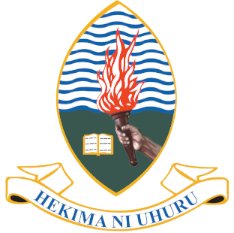X

DAVID SYLVESTER KACHOLI
Associate Professor, Dar Es Salaam University College Of Education
Education:
Ph.D. (Agricultural Sciences)
Teaching:
- Environmental Sciences
- Ecology
- Scientific Methods
- Introductory Botany
- Biostatistics
Research:
My research focus is on forest ecology, especially on effects of habitat fragmentation on forest biodiversity and indigenous uses of forest products. Also, I am well interested on environmental science of which my focus is on area of urban agriculture
Projects:
- Development of poultry feed from under-utilized food wastes: A strategic step towards value added food wastes and improved public health in Tanzanian Cities. Researchers: James Tano Zacharia (PI), David Sylvester Kacholi, Halima Mvungi Amir, and Rita Alex Lyatuu (Co-PIs). Amount: 100,000,000.00 TZS (42,850 USD). Duration: 1 year (March 2023 to February 2024). Funding: UDSM the 5th Call for competitive research and innovation grants 2022/20223.
- Screening of phytochemicals, toxicity, antimicrobial and antioxidant activities of the mostly used plants for treatment of respiratory disorders in Tabora region. Researchers: Halima Mvungi Amir (PI), David Sylvester Kacholi, and Steven Nyandoro (Co-PIs). Amount: 29,999,650.00 TZS (12,850 USD). Duration: 1 year (March 2023 to February 2024). Funding: UDSM the 5th Call for competitive research and innovation grants 2022/20223.
- Enhancing multi-disciplinary grant writing skills for early career researchers in Tanzania Higher Education. An exploratory study. Researchers: Katherine Fulgence (PI), Christina I. Raphael, David Sylvester Kacholi and Edwin Babeiya (Co-PIs). Amount: 15,000,000.00 TZS (6,522 USD). Duration: 1 year (January 2022 to December 2022). Funding: UDSM the 4th Call for competitive research and innovation grants 2021/2022.
- Ethnobotanical survey of medicinal plants in Tabora region, Tanzania. Funding: DUCE Competitive Research and Innovation Grants – 2019. Project Registration Number DUCE-20030.
- Impact of sanitation and hygienic practices on vegetables parasite load in Dar es salaam, Tanzania. Funding: UDSM Competitive Research and Innovation Grants – 2019. Project Registration Number UDSM-20012.
Publications:
- Kacholi D.S, Amir, H.M, and Isdory A.J. (2024). Traditional medicinal plants used for gastrointestinal disorders by the Nyamwezi traditional health practitioners of Tabora region, Tanzania. Ethnobotany Research and Applications, 29:1-16. doi.org/10.32859/era.29.42.1-16
- Kacholi, D.S. (2024). Antiasthmatic medicinal plants of Tanzania: an ethnomedicinal and ethnopharmacological review. The Scientific World Journal, 2024 (1), 4420431, 16 pages. doi:10.1155/2024/4420431
- Kacholi D.S. (2024). Medicinal plants used for dermatological disorders among the Nyamwezi Community in Tabora region, Tanzania. Ethnobotany Research and Applications, 28: 1-22. doi.org/10.32859/era.28.50.1-22
- Kacholi D.S. (2024). A comprehensive review of antimalarial medicinal plants used by Tanzanians. Pharmaceutical Biology, 62:133-152. doi:10.1080/13880209.2024.2305453
- Kacholi D.S and Amir H.M. (2024). Ethnobotanical survey of anti-constipation medicinal plants used in Sikonge District, Tanzania. Ethnobotany Research and Applications, 28: 1-11. http://dx.doi.org/10.32859/era.28.11.1-11
- Kacholi D.S, Kalokora O.J, Amir H.M, and Mogha N.G. (2023). Ethnogynaecological medicinal plants used by Tanzanian communities against female infertility and menstrual disorders – A comprehensive review. Ethnobotany Research and Applications, 26: 1-25. http://dx.doi.org/10.32859/era.26.69.1-25
- Kacholi D.S, Charwi, MZ and Mogha NG. (2023). Ethnomedicinal study of medicinal plants used for treatment of urinary tract infections in Mara region, Tanzania. Ethnobotany Research and Applications, 26:1-14. http://dx.doi.org/10.32859/era.26.30.1-13
- Kacholi, D.S. and Amir, H.M. (2023). Ethnobotanical study of medicinal plants traditionally used against erectile dysfunction in Tabora region, Tanzania. Journal of Ethnobotany Research and Applications, 25(30): 1-12. http://dx.doi.org/10.32859/era.30.5.1-12
- Kacholi, D.S. and Amir, H.M. (2022). Herbal remedies used by traditional healers in curing Hemorrhoids in Tabora region. Pharmaceutical Biology, 60(1): 2182-2188. https://doi.org/10.1080/13880209.2022.2136204
- Kacholi D.S. and Amir, H.M. (2022). Ethnomedicinal survey of antidiarrheal plants of the Nyamwezi people of Nsenda ward in Urambo District, central western Tanzania. Ethnobotany research applications, 24(21): 1-14. http://dx.doi.org/10.32859/era.24.21.1-14
- N.M Mogha, O.J Kalokora, Amir, H.M and Kacholi, D.S. (2022). Ethnomedicinal plants used for treatment of snakebites in Tanzania - A systematic review. Pharmaceutical Biology, 60(1): 1925-1934. doi.org/10.1080/13880209.2022.2123942
- Kacholi, D.S. and Amir, H.M. (2022). Ethnobotanical survey of medicinal plants used by traditional healers in managing Gonorrhoea and Syphilis in Urambo District, Tabora Region, Tanzania. Journal of Herbs Spices and Medicinal Plants, https://doi.org/10.1080/10496475.2022.2035476
- Kacholi, D.S. and Amir, H.M. (2021) Plants used by Nyamwezi Traditional Healers to remedy Sexually Transmitted Infections in Sikonge District, Tanzania. Journal of Education, Humanities and Social Sciences, 10(6): 89-102. http://ojs3.bongotech.info/index.php/jehs/article/view/120
- Kacholi, D.S and Sahu, M. (2021). Copper levels in three commonly edible fruits in Dar es Salaam, Tanzania: Are consumers at risk? Journal of Agriculture and Applied Biology, 2(2): 76-81. http://dx.doi.org/10.11594/jaab.02.02.02
- Kacholi, D.S. (2020). Population structure, harvesting rate and regeneration status of four woody species in Kimboza Forest Reserve, Morogoro region – Tanzania. Plants and Environment, 2(3): 94-100. DOI: 10.22271/2582-3744.2020.sep.9
- Kacholi, D.S. (2020). Density and aboriginal uses of wild tree species in Milawilila forest reserve in Morogoro, Tanzania. Tanzania Journal of Science, 46(1): 85-100.https://www.ajol.info/index.php/tjs/article/view/194819
- Kacholi, D.S. (2019). Assessment of tree species richness, diversity, population structure and natural regeneration in Nongeni Forest Reserve in Morogoro Region, Tanzania. Tanzania Journal of Science, 45(3): 330-345.https://www.ajol.info/index.php/tjs/article/view/191173
- Kacholi, D.S. (2018). Floristic Similarity and Diversity Gradients in the Eastern Arc and Coastal Forests of Tanzania. Journal of Education, Humanities and Sciences, 7(2): 93-104.http://jehs.duce.ac.tz/index.php/jehs/article/view/109
- Kacholi, D.S., Sahu, M. (2018). Levels and health risk assessment of heavy metals in soil, water and vegetables of Dar es Salaam, Tanzania.Journal of Chemistry, 2018: Article ID 1402674, 9 pages, https://doi.org/10.1155/2018/1402674.
- Kacholi, D.S. (2016). Changes in forest composition, edaphic factors and exploitation pressure between edge and interior habitats in the Kimboza forest in Morogoro Region, Tanzania. Journal of Education Humanities and Sciences, 5(2): 68-77.http://jehs.duce.ac.tz/index.php/jehs/article/view/64
- Sahu, M., Kacholi, D.S. (2016). Heavy Metal Levels in Amaranthus species from Chang’ombe-Mchicha area in Temeke District, Dar es Salaam – Tanzania. Asian Journal of Chemistry, 28(5): 1123-1126,doi.org.10.14233/ajchem.2016.19604.http://www.asianjournalofchemistry.co.in/user/journal/viewarticle.aspx?ArticleID=28_5_3
- Kacholi, D.S.(2015).Understory Composition, Diversity and Natural Regeneration Status of Uluguru Forests in Morogoro – Tanzania. Journal of Education Humanities and Sciences, 4(1): 75-98. ISSN 1821 – 7427.http://jehs.duce.ac.tz/index.php/jehs/article/view/47/0
- Kacholi, D. S.,Whitbread, A. M., Worbes, M. (2015). Diversity, Abundance, and Structure of Tree Community in the Uluguru Forests in the Morogoro Region, Tanzania. Journal of Forestry Research,26(3): 557-569, doi: 10.1007/s11676-015-0078-0https://link.springer.com/article/10.1007/s11676-015-0078-0
- Kacholi, D.S.(2014).Indigenous Tree Uses, Use values and Impact of Human Population on Forest Size, Species Richness and Tree Density in the Uluguru Forests, Tanzania. Tanzania Journal of Science. 40: 34-50,www.ajol.info/index.php/tjs/article/view/148974
- Kacholi, D.S. (2014). Analysis of Structure and Diversity of the Kilengwe Forest in the Morogoro Region–Tanzania,International Journal of Biodiversity,2014:Article ID 516840, 8 pages, doi:10.1155/2014/516840.https://www.hindawi.com/journals/ijbd/2014/516840/
- Kacholi, D.S.(2014). Edge-Interior Disparities in Tree Species and Structural Composition of the Kilengwe Forest in Morogoro Region, Tanzania,ISRN Biodiversity,2014: Article ID 873174, 8 pages, doi:10.1155/2014/873174.https://www.hindawi.com/journals/isrn/2014/873174/
- Kacholi, D.S. (2013). Floristic Composition, Diversity and Structure of the Kimboza Forest in Morogoro Region, Tanzania, Journal of Education, Humanities and Sciences,2(2): 84-95.http://jehs.duce.ac.tz/index.php/jehs/article/view/80/

